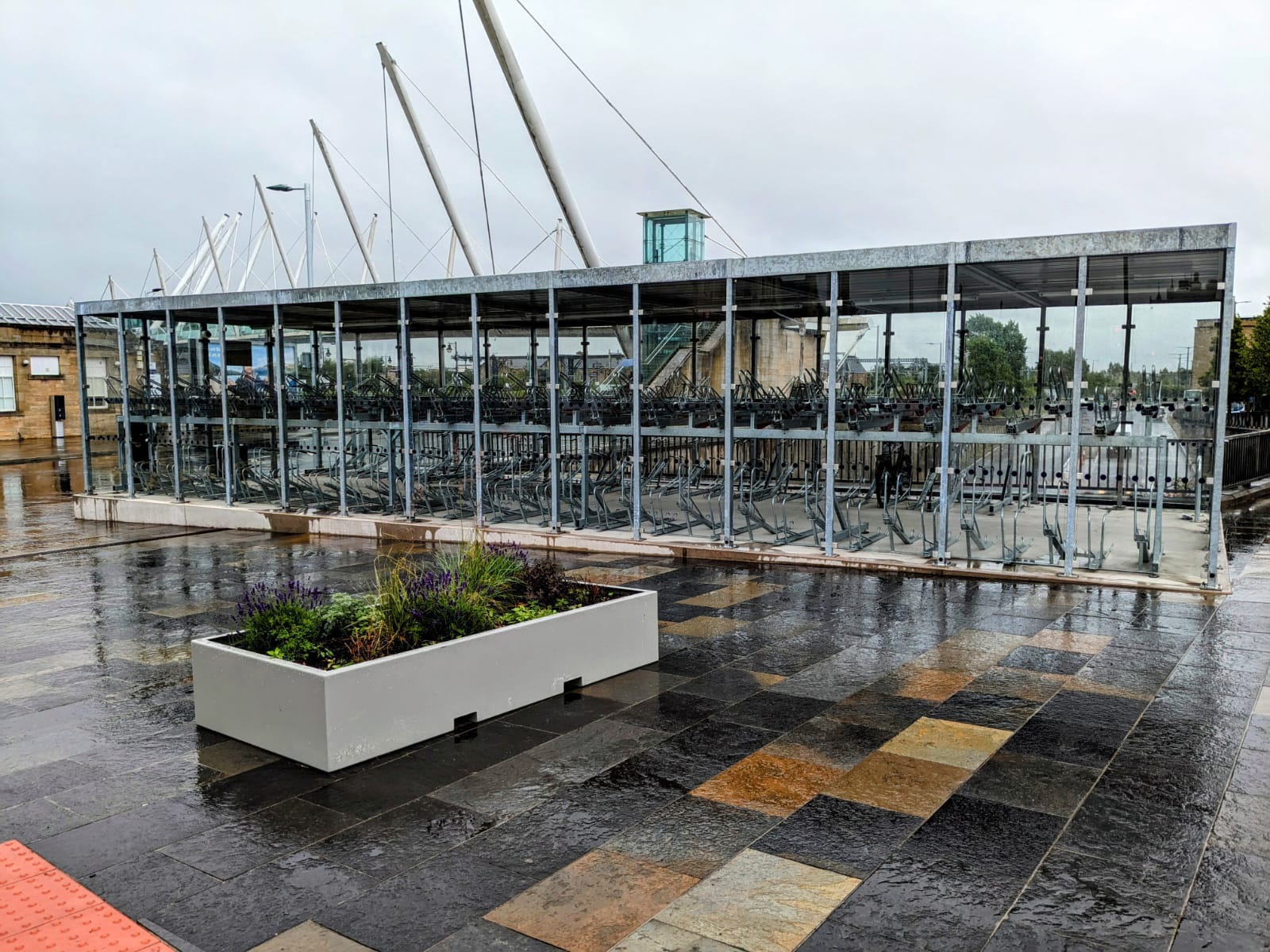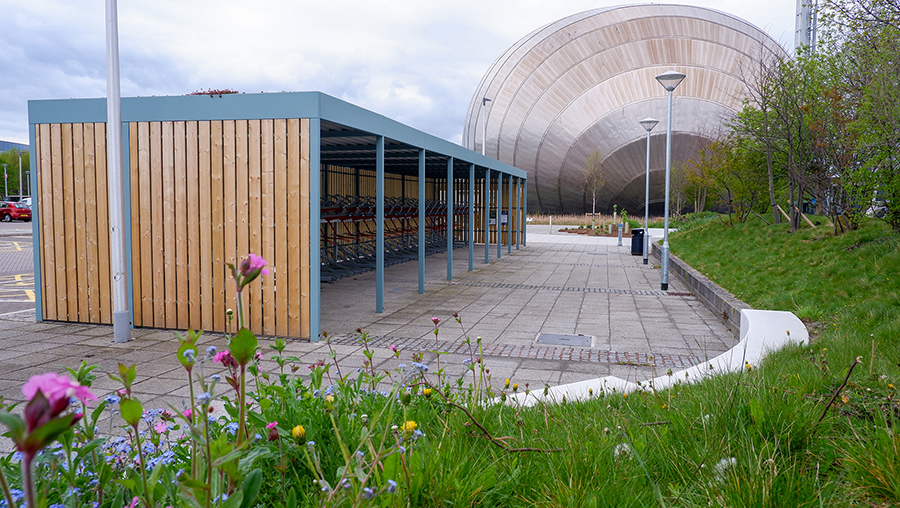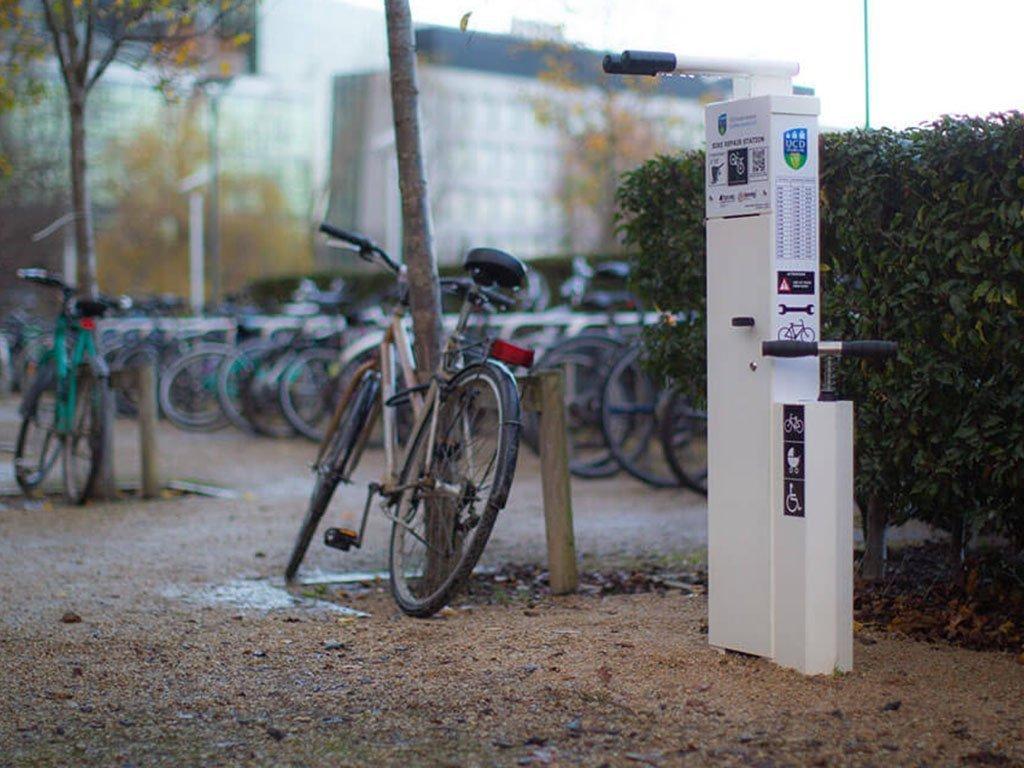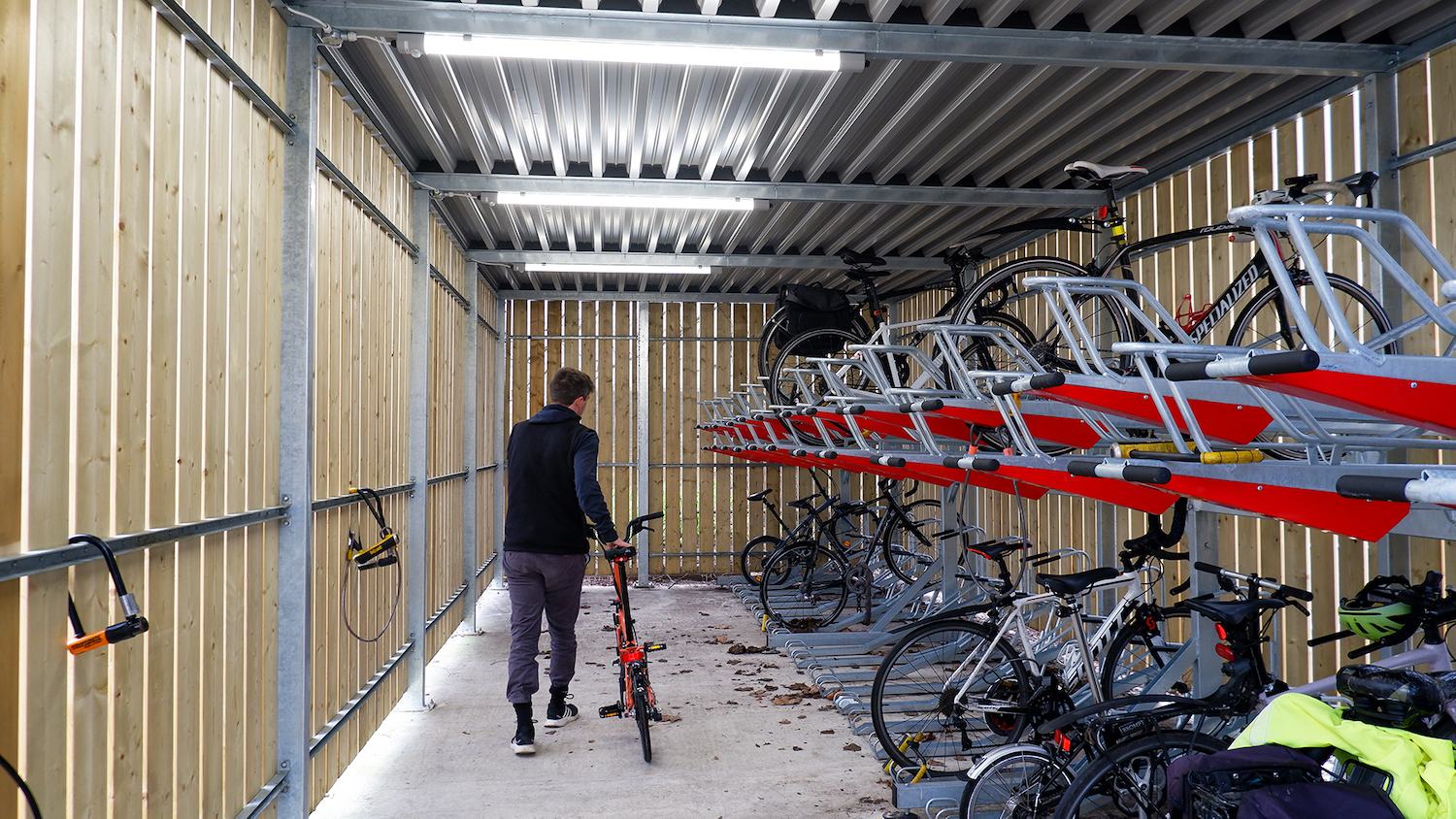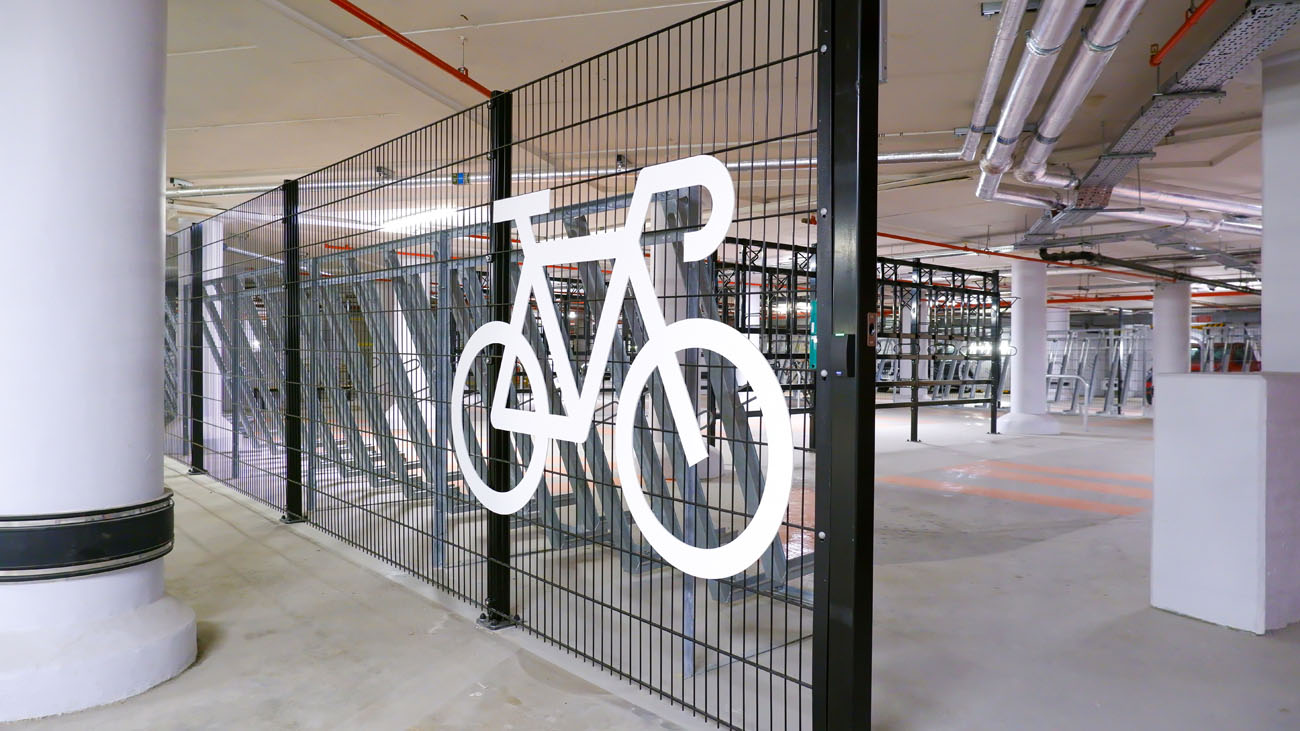At the Co-op Live Arena in Manchester, up to 23,500 people will travel to major public events all year-round. The majority will drive, many will arrive by tram or bus, but a growing number will choose to cycle.
To cater and encourage this modal shift, just a few steps from the main entrance, nearly 300 cycle parking spaces await. They’re fully covered, highly visible, and completely free to use. In fact, they are positioned even closer than the car park. It’s a deliberate move that reflects a shift in priorities: to make cycling to major events not just possible, but practical and appealing.
Having outdoor cycle parking covered is hugely beneficial for those choosing to cycle. To keep people cycling throughout all seasons, protection from the weather is an essential. Whether it is rain in the autumn – and let’s be honest, anytime with British weather – or strong summer sun, a covered shelter helps keep your saddle dry, chain cleaner, and a bike that is ready to ride back home.
However, the benefits of covered shelters go beyond weatherproofing. As more cities work to reduce car dependency, high-quality, visible cycling infrastructure is playing an ever more important role. Covered shelters, if thoughtfully designed, offer advantages that support active travel, improve public space, and contribute to long-term sustainability goals.
Weather Protection That Encourages Everyday Use
When you’re cycling, reliable weather protection makes for a much more consistent and convenient transport option. A shelter, therefore, that shields bikes from rain, wind, and UV damage helps preserve bicycles and makes the experience more appealing for regular users. Dry, well-maintained bikes are easier to manage and encourage continued use.
While not every shelter provides additional security, it is possible to combine both. Some workplace shelters will offer key-card access, with many train stations providing subscription services to keep your bike locked behind a further gated entrance.
At Stirling Station, Turvec delivered an enclosed, covered cycle hub with high quality two-tier bike racks and stylish glass cladding. The result is a more secure, weatherproof facility that encourages confidence among cyclists who split their journey with train travel.

